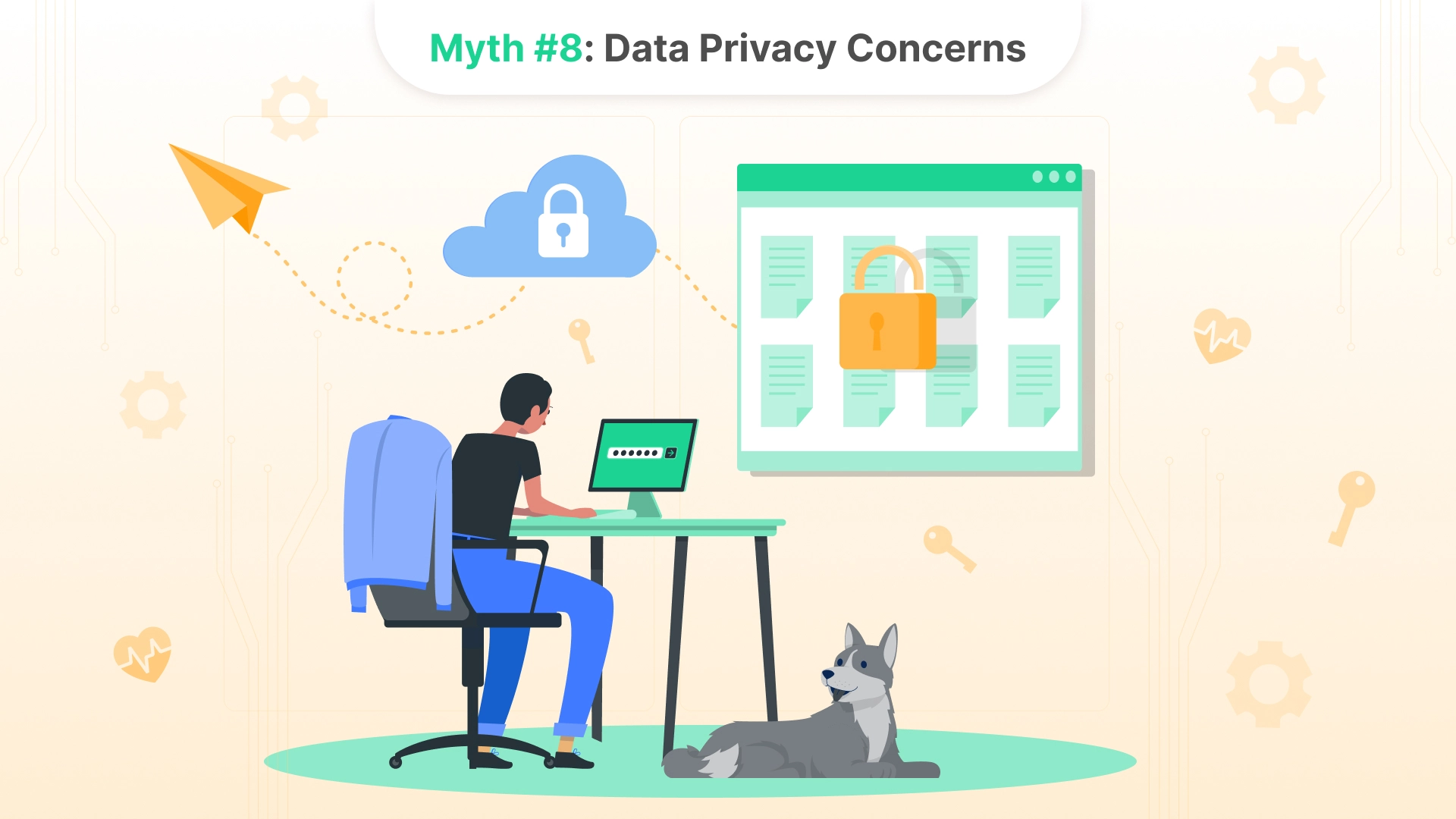

Busting the Common Myths About Healthcare Cloud Solutions for Seamless Migration
- Myth #1: Cloud Solutions Compromise Data Security
- Myth #2: Cloud Solutions are Less Cost-Effective
- Myth #3: Moving to the Cloud Means Losing Control
- Myth #4: Cloud Solutions Lack Compatibility with Existing Systems
- Myth #5: Downtime and Data Accessibility Concerns
- Myth #6: Migration is a Complex and Time-Consuming Process
- Myth #7: Limited Performance
- Myth #8: Data Privacy Concerns
- Myth #9: Cloud Solutions Are Not Reliable for Critical Healthcare Services
- Myth #10: Healthcare Cloud Solutions Lack Compliance with Regulatory Standards
- In Conclusion
Healthcare organizations increasingly turn to cloud solutions to streamline operations and improve patient care. However, despite the numerous advantages, several misconceptions persist regarding the adoption of cloud technology in healthcare. In this article, we will debunk the top 10 common misconceptions about it and provide a clear understanding of how healthcare cloud solutions can lead to a smooth and secure migration process.
Myth #1: Cloud Solutions Compromise Data Security
Reality: Security is a paramount concern when dealing with sensitive patient data. The reality is that reputable cloud providers invest heavily in security measures. They often surpass what many individual healthcare organizations can achieve on-premises. Advanced encryption protocols, multi-factor authentication, and strict compliance with industry-specific regulations ensure data is always safeguarded.
Myth #2: Cloud Solutions are Less Cost-Effective
Reality: Cloud solutions indeed involve costs, but the cost-effectiveness over time cannot be overstated. Organizations can significantly reduce capital expenses associated with on-premises hardware, maintenance, and upgrades. Moreover, the pay-as-you-go model allows them to pay only for the resources they use, eliminating the need for expensive upfront investments.
Myth #3: Moving to the Cloud Means Losing Control
Reality: In fact, transitioning to the cloud often provides more control and flexibility. Healthcare organizations can customize security measures to align with their needs and regulatory requirements. The ability to scale resources up or down on demand ensures efficient resource management and cost control. Additionally, cloud providers offer robust tools for organizations to set and enforce tailored policies.
Myth #4: Cloud Solutions Lack Compatibility with Existing Systems
Reality: Cloud providers understand the importance of seamless integration with existing healthcare systems and applications. They offer a range of APIs, connectors, and tools designed to facilitate integration. This ensures that migration to the cloud is a smooth process without the need for extensive system overhauls. Compatibility is a priority, and many cloud solutions are designed to work seamlessly with industry-standard software and systems.
Myth #5: Downtime and Data Accessibility Concerns
Reality: Cloud providers understand the critical nature of healthcare operations. They invest heavily in redundant systems, automated failover mechanisms, and comprehensive data backups to minimize downtime. While no system can guarantee 100% uptime, cloud solutions are designed to ensure accessibility and continuity of operations even in the event of unexpected disruptions.
Myth #6: Migration is a Complex and Time-Consuming Process
Reality: While migration does require careful planning, cloud providers and third-party experts offer tools and services to streamline the process. Detailed migration strategies, pre-migration testing, and expert guidance can make the transition efficient and minimize disruption to daily operations.
Myth #7: Limited Performance
Reality: Performance concerns often arise when considering cloud solutions. However, cloud providers often offer powerful infrastructure and optimization tools to ensure high performance. Factors like Internet connectivity can influence performance, but with the right configuration and resources, cloud solutions can perform exceptionally well. In many cases, cloud environments can outperform on-premises solutions.
Myth #8: Data Privacy Concerns

Reality: Storing patient data in the cloud does not automatically compromise data privacy. Reputable cloud providers adhere to strict data privacy regulations and offer advanced data encryption to protect patient information. Data privacy and security are top priorities, and cloud providers invest in robust measures to ensure compliance and safeguard patient data.
Myth #9: Cloud Solutions Are Not Reliable for Critical Healthcare Services
Reality: There’s a misconception that cloud solutions may not be reliable enough to support critical healthcare services. However, leading cloud providers offer Service Level Agreements (SLAs) that guarantee high uptime and reliability. Many healthcare organizations have successfully relied on cloud-based systems for mission-critical services, including electronic health records (EHRs) and telemedicine platforms.
Myth #10: Healthcare Cloud Solutions Lack Compliance with Regulatory Standards
Reality: Some believe that using cloud solutions makes it difficult to maintain compliance with healthcare regulations. In reality, reputable cloud providers understand the importance of regulatory compliance and often offer services and features designed to help organizations meet these standards. They provide the necessary tools and documentation to assist healthcare providers in remaining compliant with industry-specific regulations such as HIPAA, GDPR, and others.
In Conclusion
Busting common myths surrounding healthcare cloud solutions is crucial for organizations seeking a seamless migration. By understanding the realities of cloud technology, healthcare providers can harness its full potential to enhance patient care, improve operational efficiency, and achieve cost savings. With the right knowledge, expertise, and strategic planning, the transition to a cloud-based healthcare system can be a highly rewarding endeavor.
Faq
What are healthcare cloud solutions and why are they important?
+Healthcare cloud solutions are digital platforms that provide healthcare organizations with secure and scalable access to computing resources, storage, and software applications over the Internet. They are important because they enable healthcare providers to efficiently store and manage patient data, streamline administrative processes, and facilitate remote access to critical medical information.
What are some common myths or misconceptions about healthcare cloud solutions?
+They include thinking they are less secure than on-premises systems, believing they are costlier in the long run, and assuming that they require a complete migration of all data immediately. In reality, reputable cloud providers often offer robust security measures, cloud solutions can be cost-effective, and healthcare organizations can adopt a hybrid approach, gradually moving to the cloud.
How does cloud migration benefit healthcare organizations?
+Cloud migration benefits healthcare organizations by improving scalability and flexibility, allowing them to easily scale up or down to meet changing demands, reducing capital expenses on physical infrastructure, and enhancing data security and compliance through cloud providers’ robust security measures and compliance certifications.
Tell us about your project
Fill out the form or contact us

Tell us about your project
Thank you
Your submission is received and we will contact you soon
Follow us
